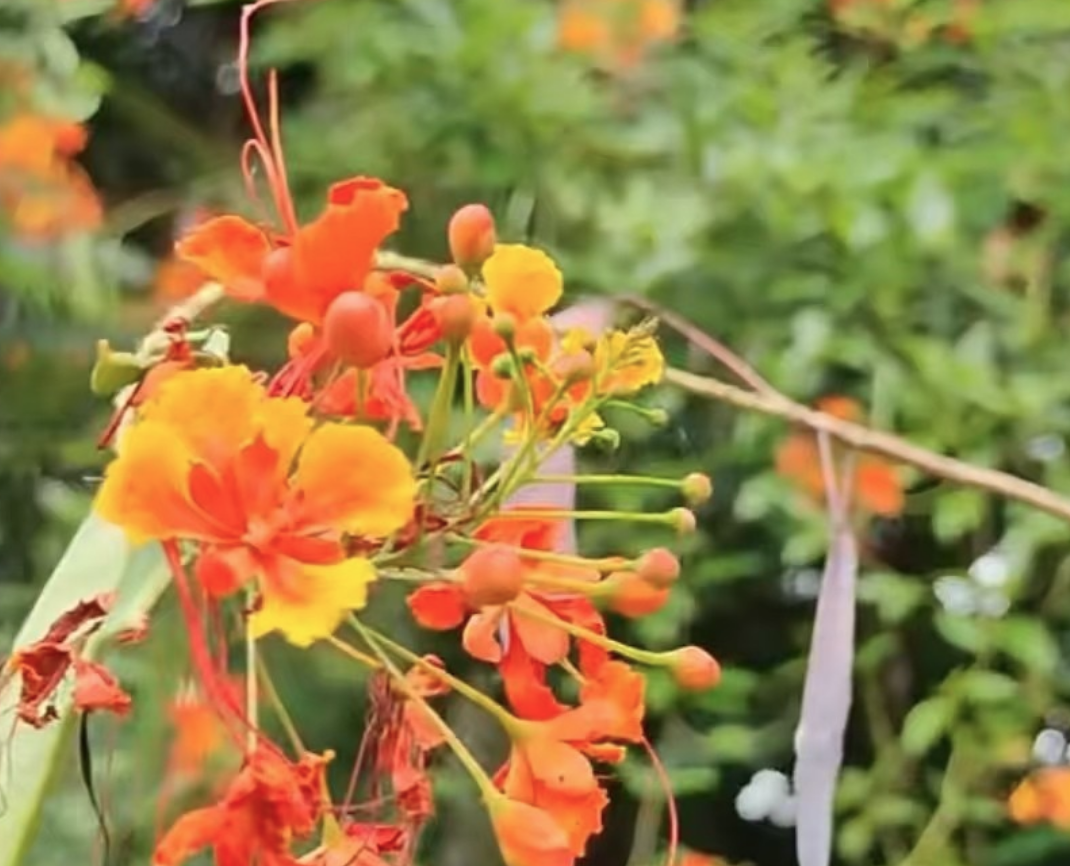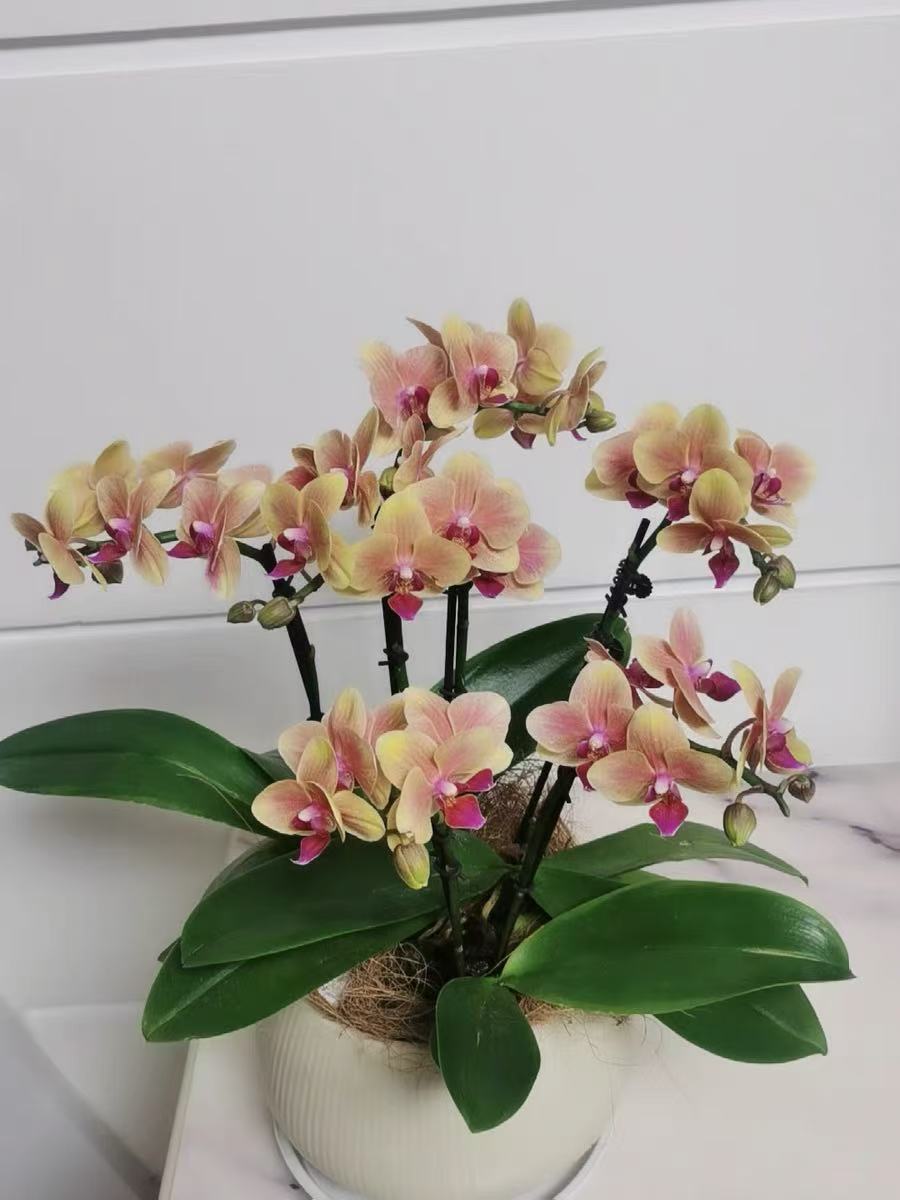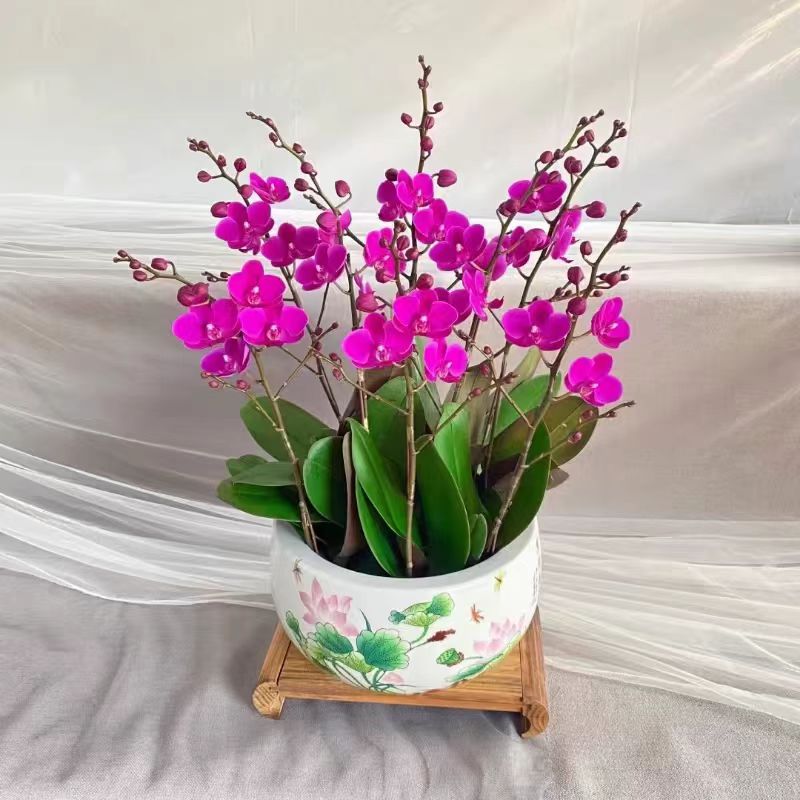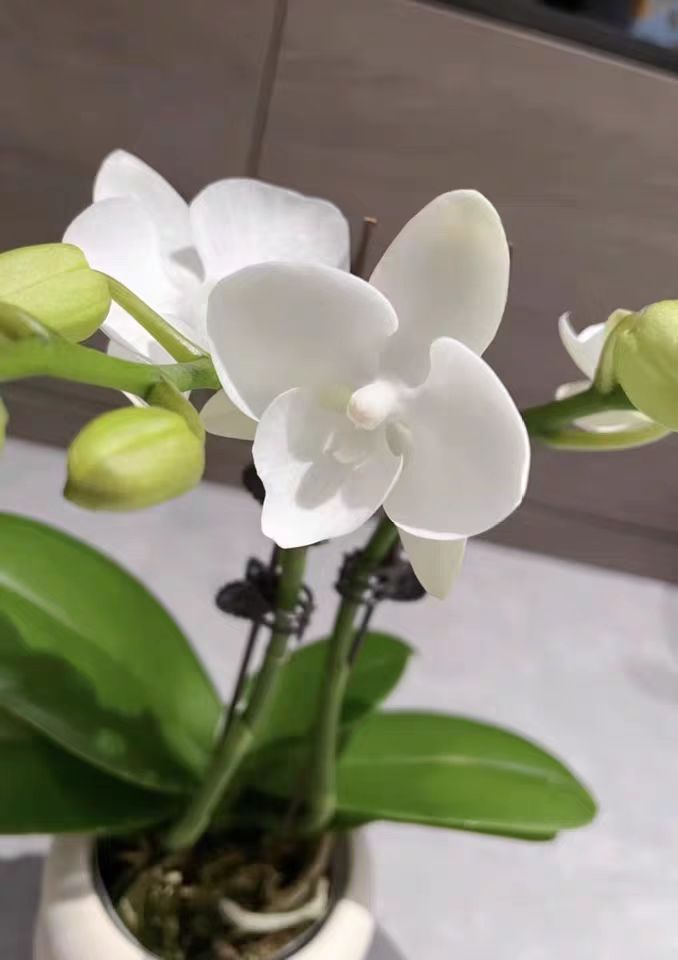Today, I'd like to introduce to you a beautiful flower that combines beauty and danger, and it is "Caesalpinia pulcherrima". Before the 17th century, an artist recorded the danger of Caesalpinia pulcherrima. At that time, African slaves and Native Americans ate its seeds to terminate their pregnancies when they wanted to have an abortion. However, although the seeds of Caesalpinia pulcherrima are poisonous, the mature seeds of some of its closely related species are edible.
Despite its danger, Caesalpinia pulcherrima is quite gorgeous in appearance. When it blooms, the racemes grow at the top of the branches. The petals are petiolate. The flowers are yellow or orange-red. The edges of the leaves have contrasting colored edges, and there are long claw-like strips in the flowers. Overall, it looks noble and special. And its flowering and fruiting period can be almost all year round.
In the flower market, although it is not commonly seen everywhere, six or seven out of ten stores sell it. Generally, it is mainly maintained as a potted plant. After you buy it home, it likes sunny places and can also tolerate slight shade. It is recommended to place it on balconies, bay windows and other positions. In terms of temperature, it can tolerate temperatures up to 30 degrees Celsius, but it is extremely intolerant of cold. As long as the temperature hovers around zero degrees Celsius, the plant will enter a state of growth arrest.
In terms of daily watering, it likes a humid environment, so it needs to be watered more often. However, it should also be noted that there should be no waterlogging at the bottom of the flowerpot, otherwise the roots will easily be damaged. During the growth periods in spring and autumn, watering can be done immediately after the surface of the soil becomes dry. However, it should also be noted that in a humid environment, good ventilation conditions should be maintained to prevent the occurrence of pests and diseases. In summer, watering can be done when the surface of the soil is slightly moist. In winter, more caution should be exercised to prevent the cold water from causing frost damage to it.
In terms of soil and fertilization, it is not very strict with soil requirements. It prefers slightly acidic soils rich in humus and with good air permeability. If possible, using such soils can ensure that Caesalpinia pulcherrima absorbs stable nutrients and makes the flowers bloom more brightly. In terms of fertilization, it likes fertilizers but is not suitable for thick fertilizers. Applying phosphorus and potassium fertilizers before flowering and during the peak flowering period can promote flowering. During the rest of the time, thin organic fertilizers can be applied, and top dressing can be done once every half a month to promote growth. However, it should be noted that fertilization should be stopped in winter.
How toxic is Caesalpinia pulcherrima?

Share with
Tagged in :




Leave a Reply